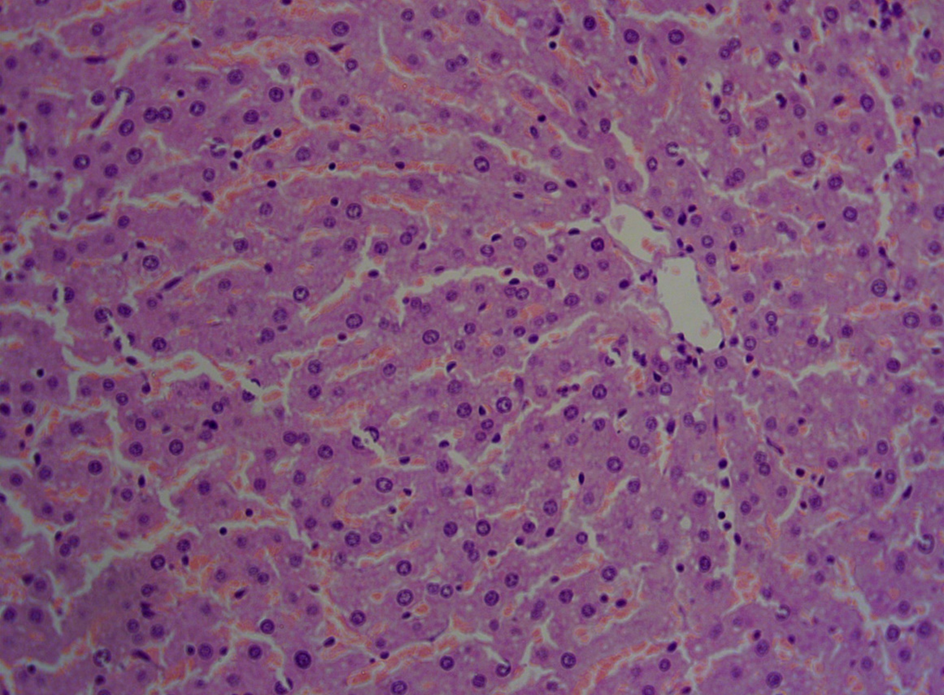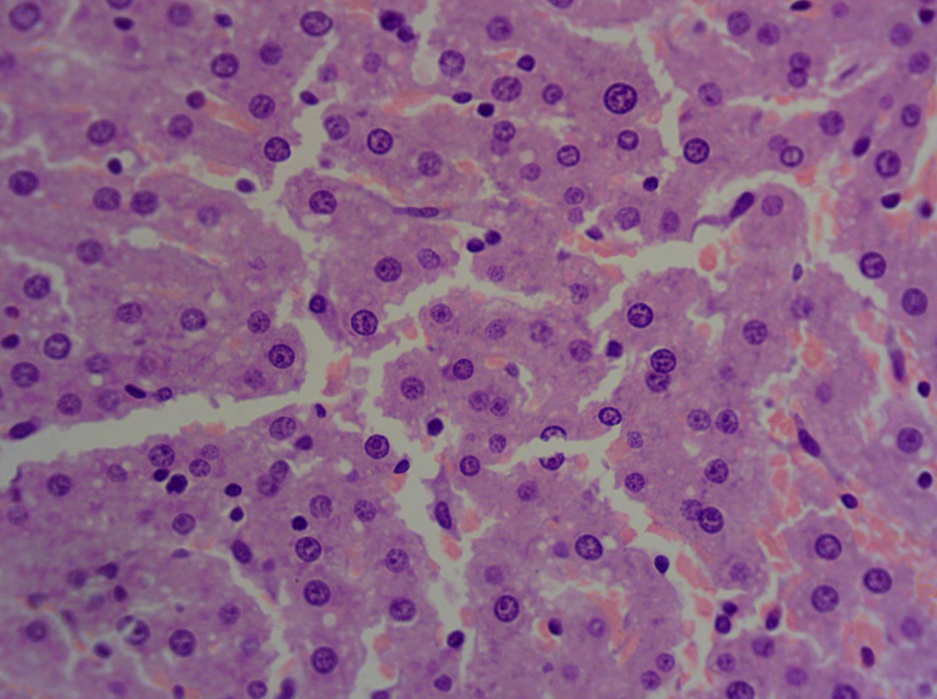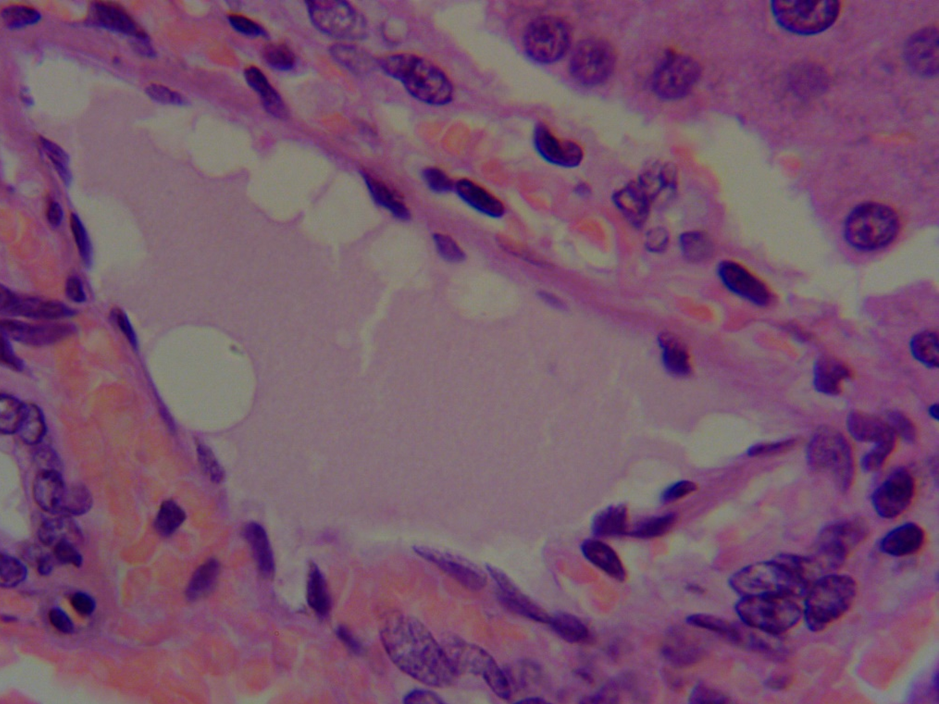Особенности кинетических кривых кофеина в моче, зависящие от дозы при индуцированном липидозе печени
Особенности кинетических кривых кофеина в моче, зависящие от дозы при индуцированном липидозе печени
Аннотация
Печень является важнейшим органом в организме. При диагностике патологии печени клиренс-тесты являются важным инструментом. Они позволяют оценить способность печени к быстрому и эффективному выведению определенных веществ из крови. Тест на клиренс кофеина является одним из методов оценки функционирования печени. Тест основан на скорости метаболизма кофеина в печени с помощью фермента цитохрома Р450. Целью исследования является оценка дозозависимых особенностей кинетических кривых кофеина в моче лабораторных животных с индуцированным жировым гепатозом. Для оценки уровня кофеина использовался спектрофотометр модели UF-1100. Результаты исследования показывают, что при индуцированной жировой болезни печени в плазме крови выявляется более высокий уровень кофеина по сравнению с клинически здоровыми животными, что объясняется максимальной нагрузкой на цитохромный путь и, как следствие, увеличением содержания кофеина в кровотоке.
1. Introduction
Liver diseases are widespread in farm and domestic animals. At industrial complexes for intensive fattening of young cattle, liver pathologies are registered in more than 33% of animals. The widespread occurrence of liver diseases in cows is associated with the changed structure of feed consumption, the intensive use of silage and stillage, or other high-fat feed, as well as the presence of fungal toxins and other harmful substances in their composition. The load on the liver increases sharply during such critical periods of animal life as pregnancy and calving. According to statistics, fatty infiltration of the liver after calving is observed in almost all cows, and subsequent lactation. According to statistics, fatty infiltration of the liver after calving is observed in almost all cows
, , .While diagnosing liver pathology, clearance method of assessing functionality appear to be an important instrument. They make it possible to assess the liver's capacity to remove specific chemicals from the blood quickly and effectively. A multitude of clearance method of assessing functionality are available to diagnose different hepathopathologies, including fatty liver disease, hepatitis, and cirrhosis. To guarantee correct results, their interpretation, and any necessary treatment, these tests should only be carried out by a qualified veterinarian
, , , .The results of clearance methods of assessing functionality are very valuable in evaluating liver diseases. They make it possible to comprehend the organ's detoxifying status. Clearance methods of assessing functionality are performed based on measurements of the time required for a specific chemical to be removed from the blood
, , , .The caffeine clearance methods of assessing functionality is a method used to assess liver function. The test is based on the rate at which the liver breaks down caffeine using the cytochrome P450 enzyme. Tests can be used to track the pace at which caffeine leaves the hepatobiliary system. It is imperative to keep in mind that this test must be seen as a part of the diagnostic process
, , , .The goal of the experiment was to understand changes in caffeine urine levels in accordance with the different given dosages in laboratory rats with indused fatty hepatosis.
2. Research methods and principles
The study was conducted at the vivarium of SPbSUVM. The parameters of the animals, such as species, age, weight, nutrition, and living circumstances, matched with previous route of experiments in this University
. The Bioethics Committee of SPbSUVM accepted the experiment design.Using strontium salts, fatty hepatosis was induced (patents RU2766772C1 (Strontium sulfate (SrSO4) is used as a toxic agent, which is administered once as a suspension consisting of 5 g of strontium sulfate (SrSO4) and 5 ml of water for injection) and RU2820474C1 (Strontium hydrochloride (SrCl2) is used as a toxic agent, which is administered once as a suspension of maximum dispersion consisting of 2 g of strontium hydrochloride (SrCl2) and 5 ml of water for injection))
, .Using accepted clinical and biochemical metrics, success was assessed. Three groups of thirty-six laboratory rats – six male and six female – were created. A 20% solution of caffeine sodium benzoate (Mosagrogen LLC, Russia) was subcutaneously administered into each group at doses of 50, 100, and 150 mg/kg of pure caffeine. The therapeutic range of the medicine determines these dosages. Moreover, other investigators found that those doses produced the highest stable and observable blood plasma caffeine concentrations
.Animals displaying side effect symptoms were eliminated from the study after their electrocardiograms were assessed using the Physiobelt wireless equipment (Neurobiotics, Russia).
Urine samples were taken from each rat 1, 4, and 8 hours following the injection of the medication using capillary tubes and an extra appropriate urethral pressure. Based on the medication's reported half-life, the time intervals were chosen. Caffeine levels were measured using a spectrophotometer model UF-1100 (Shanghai Mapada Instruments Co., Ltd., China).
The Statistica 6.1 software was used to statistically evaluate the results. The arithmetic mean (M) and its mean error (m) were computed. The significance of the difference (p) was not calculated using the Student's t-test because the study was exploratory in nature and there were no comparison groups
.3. Main results
The experiment concluded with histological examination, which confirmed the induction of fatty liver hepatosis. Induction of fatty liver hepatosis was confirmed by histological examination at the end of the experiment. Liver histological sections are shown in Figures 1-4.

Figure 1 - Hepatic lipidosis in an experimental rat
Note: magnification 10x10, hematoxylin and eosin staining

Figure 2 - Hepatic lipidosis in an experimental rat
Note: magnification 10x20, hematoxylin and eosin staining

Figure 3 - Hepatic lipidosis in an experimental rat
Note: magnification 10x40, hematoxylin and eosin staining

Figure 4 - Hepatic lipidosis in an experimental rat
Note: magnification 10x100, hematoxylin and eosin staining
Table 1 and Figure 5 show the findings of the trace amounts of caffeine in the urine of lab animals. The data of the group without pathologies are taken from the previous series of experiments
. The significance of the difference (p) was not calculated using the Student's t-test because the study was exploratory in nature and there were no comparison groups .Table 1 - Urinary caffeine levels after exogenous caffeine administration
Administered dosage of the medicine (calculated as pure caffeine) | 50 mg/kg | 100 mg/kg | 150 mg/kg | |||
T after injection / sex of animals | ♂ | ♀ | ♂ | ♀ | ♂ | ♀ |
1 hour | 1,047±0,21 | 1,099±0,16 | 3,600±0,812 | 3,525±0,417 | 6,590± 0,920 | 6,110±0,943 |
4 hours | 1,207±0,78 | 1,238±0,39 | 5,281±0,504 | 5,098±0,542 | 7,494±0,673 | 7,056±0, 788 |
8 hours | 1,921±0,24 | 1,949±0,82 | 5,457±0,906 | 5,729±0,893 | 8,468±1,023 | 8,650±1,047 |

Figure 5 - The results of trace levels of caffeine in the urine of laboratory animals
4. Conclusion
The capacity of clearance methods to forecast the functional state of the liver is a crucial factor in the diagnosis and follow-up of liver disorders. With the aid of clearance procedures, one can assess the speed at which foreign substances enter the liver and identify a variety of dysfunctions associated with its functioning. By utilizing the predictive capacity of clearance techniques to evaluate the hepatobiliary system's functioning state, it is feasible to predict the potential effects of liver diseases and determine their likelihood with greater accuracy. For this reason, veterinary medicine should prioritize further research and development of clearance techniques in order to improve the effectiveness of diagnoses and the pharmacocorrection of liver diseases that follows.
